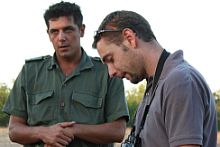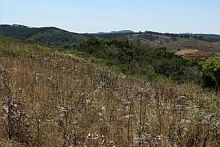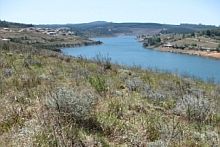SAEON Ndlovu Node to monitor global change impacts on escarpment vegetation
|
The SAEON Ndlovu Node has launched a new research project in South Africa's Limpopo Province to monitor global climate change on the vegetation of the escarpment.
Global climate change encompasses the effects of elevated CO2 levels and the associated changes in climatic variables such as temperature and rainfall. In the immediate future (2050) of the South African lowveld these predicted changes include an increase of 2-3oC and a more variable rainfall regime with more intense wet periods interrupted by prolonged periods of drought. These changes are likely to impact ecosystems at higher altitude first, such as those on the slopes of the escarpment.
Dire consequences for major vegetation types
The interaction between climate and fire determines the distribution of grassland, savanna and forest on the upper slopes of escarpment in the region. Climate change may therefore have dire consequences for the composition and distribution of these major vegetation types, either directly or by altering historical fire regimes.
The common prediction is for the encroachment of savanna and forest tree species into what remains of the open grasslands. These grasslands support a huge diversity of plants (second only to the fynbos floral kingdom), but have been reduced to a mere fraction of their former range by the plantation industry. However, no on-the-ground research has been initiated to test the prediction of trees encroaching on these threatened grasslands, and this limits our ability to plan for their protection in the future.
Long-term vegetation monitoring programme
The SAEON Ndlovu Node has recently appointed a Senior Scientist, Dr Dave Thompson, who joins the Node after completing several years of post-doctoral research in the fields of indigenous resource utilisation and ecosystem functioning. Dave is currently designing a long-term vegetation monitoring programme to track the climate-affected fate of grasslands and savannas over the next several decades.
The area surrounding the small town of Haenertsburg, situated in the foothills of the Limpopo Drakensberg, supports grassland, savanna and forest vegetation types of remarkably high biodiversity, and has been chosen as the field site for this research initiative.
"Much of the research being planned comes from similar long-term projects currently being conducted in the northern hemisphere," says Dave, "but the specific research questions have been adapted to suit the local situation, and will provide locally and globally relevant answers."
Projects of various scales - from monitoring individual and species-level responses to climate change through to mapping large-scale shifts of the grassland and savanna biome - are planned to start in 2009. Together these projects will provide the data necessary to answer some of the questions posed by the broader research programme. These include:
- Do germination requirements and seed dispersal capabilities predict future plant community composition?
- Will species loss / turnover result in shifts in the structural and functional diversity of the grassland?
- Can management interventions prevent the invasion of trees into grasslands and maintain open savannas under climate change?
- Can changes in the flowering time of grassland species be used as a tool to detect climate change?
For more information, contact Dave on +27 (0)13 735 3535 or dave@saeon.ac.za













